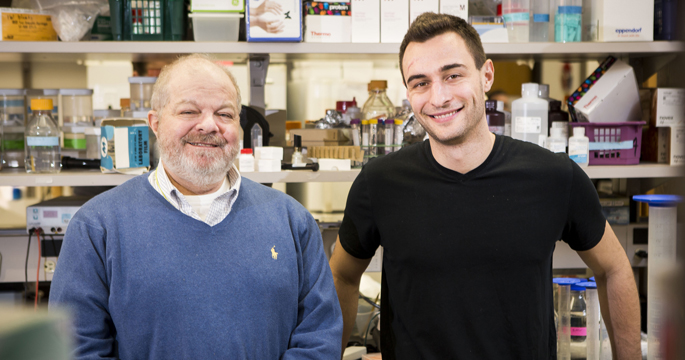
Researchers at Vanderbilt University have discovered how insulin crosses the capillary endothelium to exit blood vessels and stimulate skeletal muscle cells — a major finding that may lead to new ways to reverse insulin resistance, a hallmark of type 2 diabetes.
Their discovery, published earlier this month by the Journal of Clinical Investigation, was made possible by the development of a novel microscopy technique which allowed measurement of insulin movement across the endothelial wall of skeletal muscle capillaries in the mouse.
“The muscle capillary wall is a formidable barrier to insulin’s action on muscles,” said David Wasserman, PhD, the Annie Mary Lyle Professor of Molecular Physiology and Biophysics.
“It is the rate-limiting step for muscle insulin action and a potential site of regulation,” Wasserman said. “Defining how insulin leaves the capillary is essential to understanding and treating insulin resistance.”
Wasserman directs the Vanderbilt-NIH Mouse Metabolic Phenotyping Center. The paper’s lead author is Ian Williams, a graduate student in Wasserman’s lab who made the advancements necessary to measure aspects of microcirculatory function simultaneously with molecular transport in live mice.
One of insulin’s key functions is to stimulate glucose uptake by muscle, where it is stored or used as fuel. To stimulate glucose uptake insulin must cross the endothelial barrier into muscle tissue. Impaired delivery of insulin into tissue is a key feature of insulin resistance and type 2 diabetes.
Exactly how insulin gets from blood vessels to the muscle cells has remained a mystery — until now. Using a quantitative intravital fluorescence microscopy technique they developed combined with mathematical modeling, the researchers showed that insulin moves across the endothelium by fluid-phase transport.
Such movement is not dependent on the presence of endothelial insulin receptors or limited by saturation of endothelial transport processes, as had been hypothesized previously.
Better understanding of the variables controlling insulin movement across the endothelial wall could lead to improved strategies for reversing insulin resistance, including development of small molecules that enhance insulin delivery or novel insulin analogs that can access muscle more easily.
The fluorescence microscopy technique developed for these studies can be applied to other drugs and hormones to study molecular access to a range of tissues, Wasserman added.
Other Vanderbilt faculty members who contributed to the study were K. Sam Wells, PhD, and Jamey Young, PhD.
The research was supported in part by National Institutes of Health grants DK054902, DK050277, DK059637, DK109594, DK007563 and DK020593.












